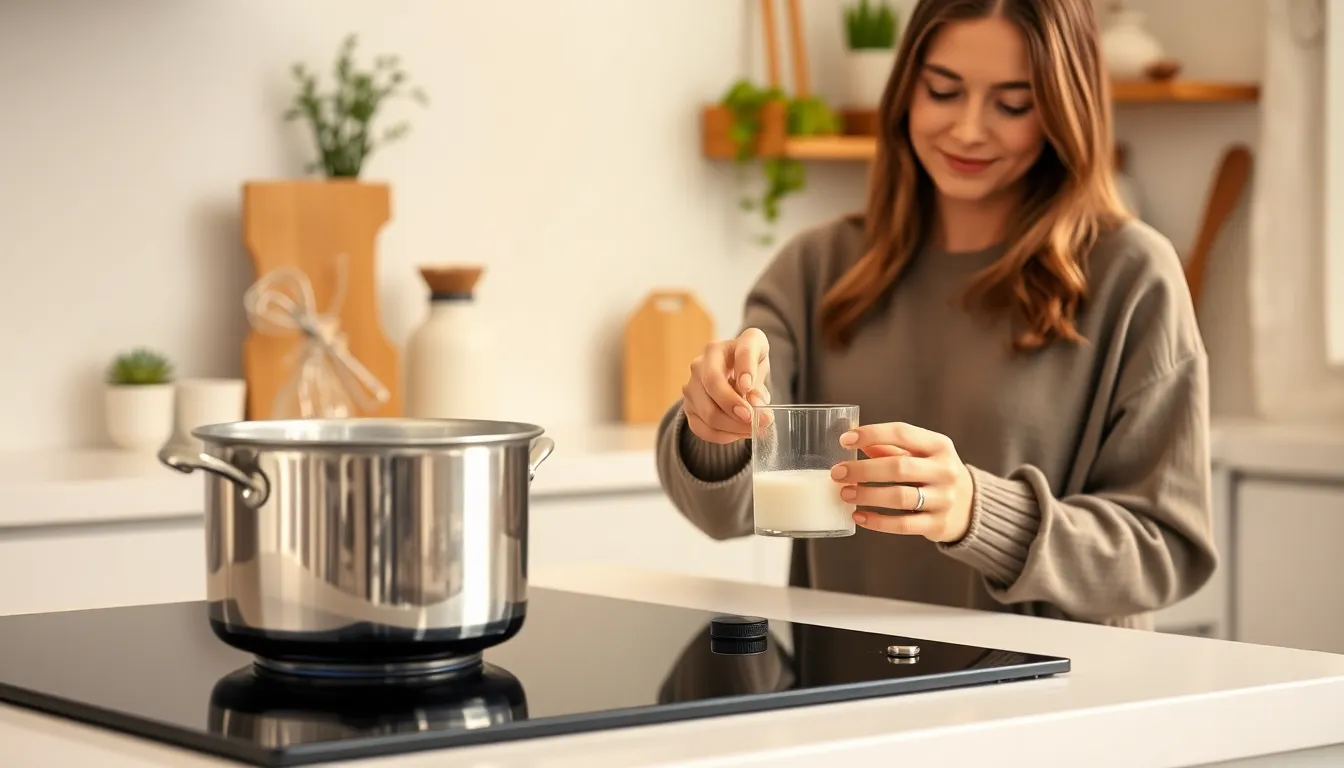Table of Contents
ToggleEver found yourself staring at a carton of milk, contemplating whether to heat it up? You’re not alone. Warming milk isn’t just about creating a cozy drink. It’s a culinary art that can elevate your hot chocolate game or soothe your sleep with a perfect glass of warm milk. Let’s jump into why this seemingly simple task is worth mastering. Trust us, you’ll impress everyone, from the coffee aficionados to your late-night snack cravings.
Why Warming Milk Is Important

Warm milk is more than a comforting beverage: it has a surprise list of benefits.
Health Benefits Of Warm Milk
First off, warm milk can be a soothing remedy. It’s often associated with sleep aid properties due to tryptophan, an amino acid that helps reduce insomnia. Imagine curling up on a chilly evening with a warm cup. Not only will it relax you, but the warmth can also aid digestion. Warm liquids promote better digestion compared to cold ones.
Common Uses For Warmed Milk
From coffee to creamy soups, warming milk enhances flavors and textures. It’s essential in recipes like béchamel sauce or custards and works wonders in lattes or hot chocolates. But, warming doesn’t just apply to beverages. Incorporating warm milk into oatmeal or cereal transforms breakfast into a comforting experience.
Methods To Warm Up Milk
Heating milk can be done through several accessible methods. Each method has its perks and gives you that beautifully warmed milk in no time.
Stovetop Method
To warm milk on the stovetop, pour it into a saucepan. Place it over medium heat and stir occasionally. The stovetop method provides control and helps prevent scorching. Keep an eye on it: you’ll want to avoid letting it boil. Just remember, it’s about patience, great things come to those who wait.
Microwave Method
Need a quick option? The microwave comes to the rescue. Pour the milk into a microwave-safe container and heat it on high in 15 to 30-second intervals. Stir between each interval to ensure even heating. With this method, you can have warm milk faster than saying hot chocolate. Just be cautious as it can easily bubble over if left unattended.
Double Boiler Method
Prefer a gentler approach? Try the double boiler method. Fill a pot with a couple of inches of water, bringing it to a simmer. Place another pot with your milk on top. The steam gently warms the milk without the risk of burning. This method is ideal for delicate recipes that require specific temperature control.
Tips For Avoiding Scalding or Burning
One of the biggest downfalls in warming milk is scalding, which can ruin the taste. Here are a couple of pointers to help avoid that mishap.
Selecting The Right Milk
Choosing the correct type of milk can make all the difference. Whole milk tends to withstand heating better due to its fat content, which aids in even heating. Skim or low-fat milk might require a bit more caution, as they are more prone to scalding.
Temperature Guidelines For Warming Milk
In general, you want to aim for around 150°F to 160°F for warm milk. This temperature range is warm enough to be cozy without reaching the boiling point, where proteins start to denature, causing that unappealing burnt flavor. A food thermometer can be your best friend here if you know you’re prone to forgetting that chocolate chip cookies are in the oven.




